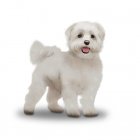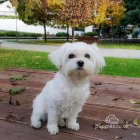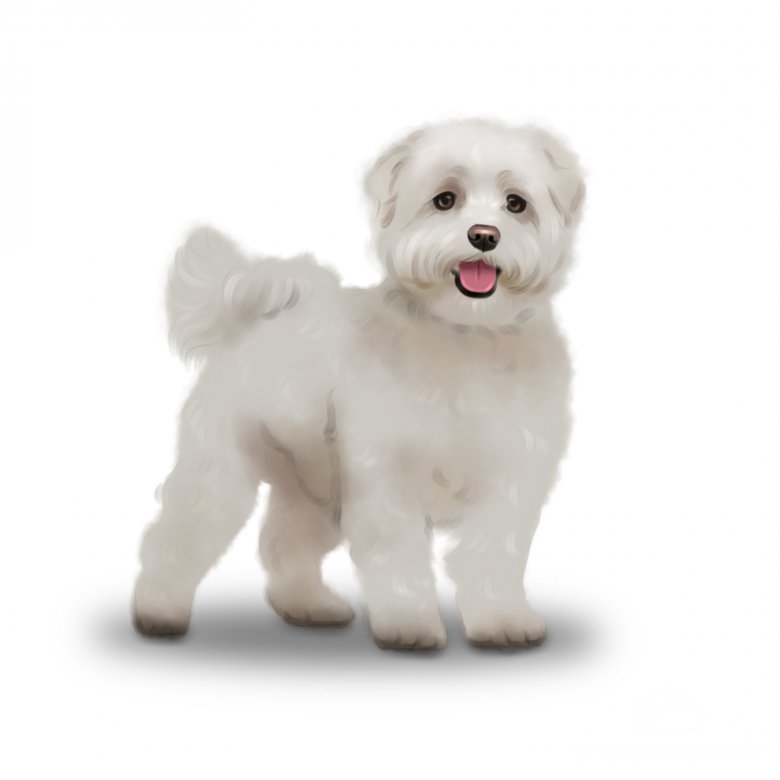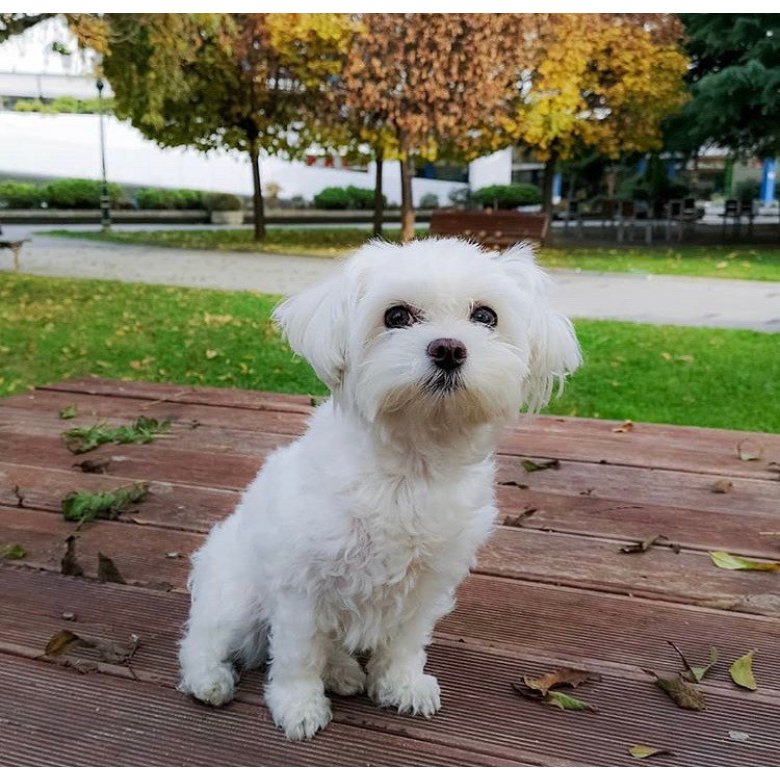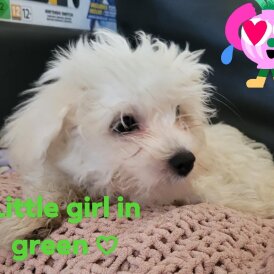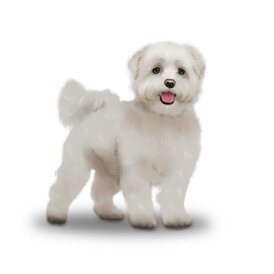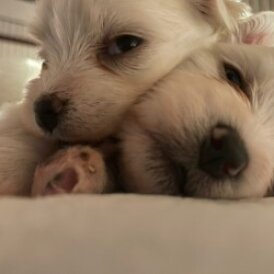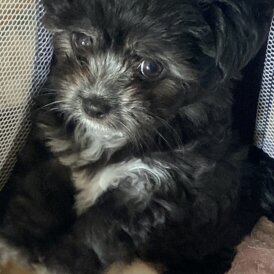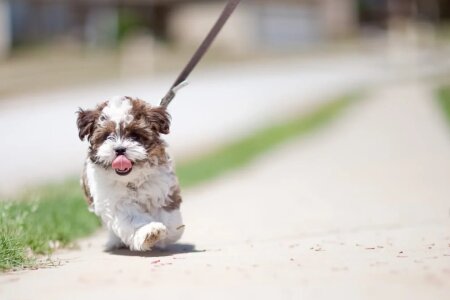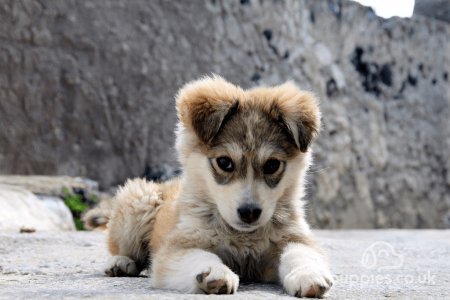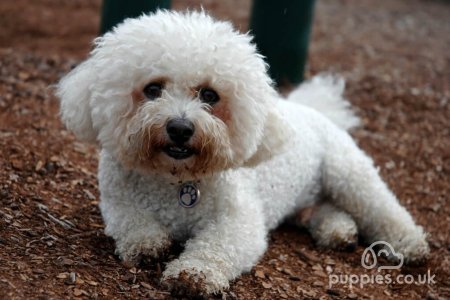History
The Maltese is a member of the toy group of dogs. He has a long, silky coat and a beautiful, sweet expression that comes from having dark eyes, with darks rims and a black nose contrasting against his white hair. Maltese dogs, originally from the Mediterranean island of Malta, are mentioned in writings that go back hundreds of years. By the early 14th century, the breed had made its way to England as companion animals of the well to do. It seems that over the ensuing centuries the popularity of the Maltese dropped off. However, they reappear in the 19th century when two Maltese were brought to England from the Philippines. Originally intended as gifts to royalty, they seem to have been ‘re-gifted’ to persons unknown.
Care
Does the coat require a lot of maintenance?
The Maltese has a single coat with minimal shedding. Unlike other breeds with thick coats, any shedding is barely noticeable. While some breeders will ‘sell in’ the breed as hypo-allergenic, would-be owners should take care. No dog is 100% hypo-allergenic. The hairstyle options are varied depending on owners’ tastes. From long show coats to short puppy coat, or even close shaves, this dog can handle a variety of looks. The down side of a single coat is that a Maltese has minimum protection against the cold and this lack of cover can lead to dry skin. A condition that can be avoided by the use of high quality shampoos and products. When kept in show condition the single layer coat is long, curling as it reaches the floor. When the Maltese dog coat is not maintained to such a high standard, it tends to be curly or shaggy, but many owners choose to keep it cut short for ease of maintenance. The coat of Maltese puppies malts little or no hair so it is an ideal breed for allergy sufferers.
How to exercise a Maltese Puppy
The Maltese is a lively and playful character who likes to perform tricks. He has a kind and fairly docile temperament. He needs around thirty minutes exercise a day and can live in the town or the country.
Appearance
Coat colour is either white or ivory. The ears are triangular and fall down by the side of the skull and his tail is set high and curls up and over the body. These happy little dogs take quite a bit of maintenance due to their long coats as they need daily attention to keep them in top condition.
How big is the Maltese?
They range in size, with a maximum height from the wither, (that’s the bottom of the neck or top of the shoulder), being around 25cm and weigh between 2 and 5kg.
What colours does the Maltese come in?
The most common colour is a solid white coat, though touches of light tan may be present on the ears. Maintaining the dog’s white coat does take upkeep. Urine and other common contamination can cause staining. Discolouration of the coat around the eyes is also a frequent concern to owners.
Temperament
Is the Maltese a good pet?
The Maltese is one of the smallest breeds of dog – a full sized adult weighs less than 3kg. The average height is anywhere between 20 to 25 centimetres. The good news is that this is the ideal dog for modern living. Owners who prefer a leisurely stroll to a ramble, will find the exercise routine to their liking. Two shortish walks will generally suffice. A busy household with children is probably not be the best of environments. This is not the most robust of breeds and long hikes in open country would be most unwelcome.
Can I leave my Maltese Puppy at home alone?
This is never pleasant for owner or puppy at the start of the relationship. Known as separation anxiety, it can be draining and takes courage and commitment to overcome. There are many different signs for owners to look out for; the most obvious being whining or excessive barking. Less obvious, but more upsetting signals that something is wrong include self-chewing. Whatever the signs, the problem needs to be nipped in the bud. First step is to set up the right environment and secondly provide the puppy with what they need to help them cope with the situation. Consider using an appropriately sized playpen, rather than giving the puppy the run of the house. Reducing the space can help decrease feelings of isolation. A pen should meet the needs of the dog’s natural instincts for the safety of a den. It’s also a handy space to keep all puppy’s favourite toys within paws length. Placement of the pen will also help matters. If possible, owners should choose a room that’s well used by the family. It must be placed well away from drafts or direct heat. In other words, owners need to look for a comfortable spot. Some choose to place pee pads within the pen even after the dog is housetrained. Background noise is also helpful for some. Rather than relying on the TV or radio, owners can opt for more control and buy commercially available sounds created specifically for canine ears. Even when owners are home, the door to the pen should always remain open. This is a safe space night and day. Time for including the needs of the dog should be scheduled as part of the daily routine. Leaving a dog in the home should not be a rushed last minute affair. This will only lead to more tension and potentially increased anxiety. The Maltese dog’s need must always be considered. It starts with a morning walk to allow the Maltese to stretch its muscles after sleep and go to the toilet. Time for a proper good bye well before leaving eats up more time. A sudden unexpected sprint to the exit door is not going to calm the nerves of any puppy. The return home is equally important. Keep feelings under wraps for the first few minutes, attend to other household chores and then make the reunion a casual occurrence rather than an emotion-filled event.
Toys that will keep a Maltese interested and out of trouble
Owners can’t keep their pets interest all the time. Maltese puppies and dogs need to find their own amusement too. When indoors, this can be limited, so it’s worth investing in some toys that will keep puppy amused and active. Motion activated toys, that makes noise or emit light when touched, are worth considering. As are treat dispensers.
Other organisations
Thank you very much for the following pages for helping shape this article. https://www.akc.org/dog-breeds/maltese/ https://www.thekennelclub.org.uk/services/public/breed/display.aspx?id=6159 https://www.americanmaltese.org/






